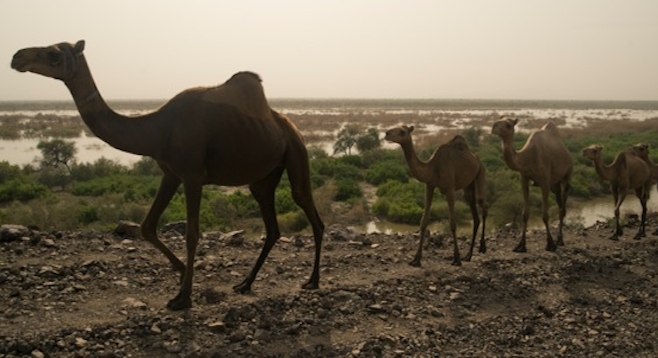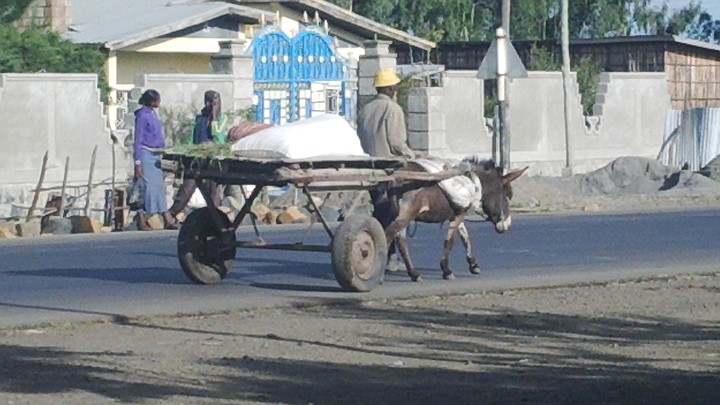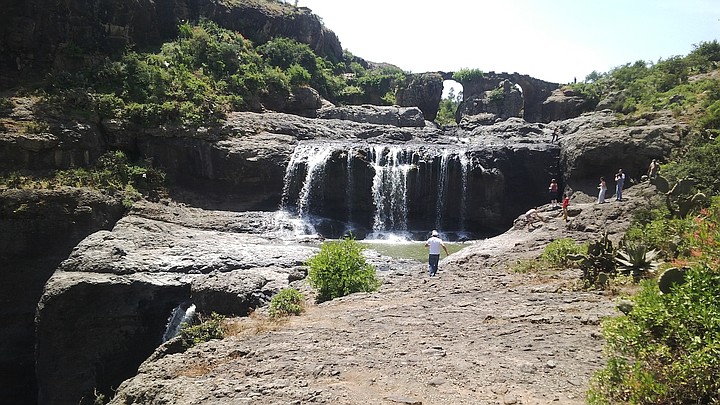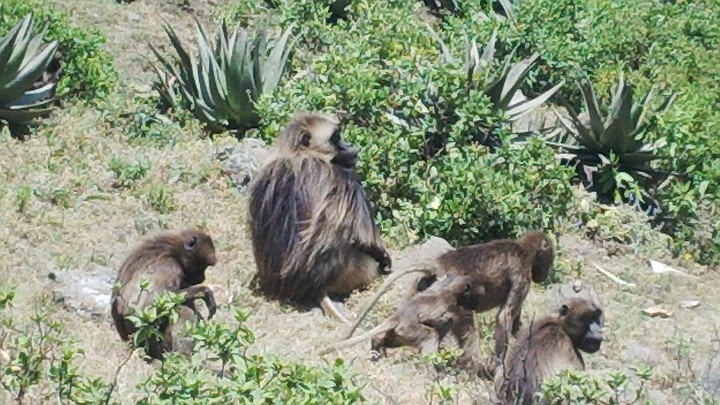 Facebook
Facebook
 X
X
 Instagram
Instagram
 TikTok
TikTok
 Youtube
Youtube

“Ethiopia?!” cried my mother, her eye wide shut. “Why are you going there?”
It’s not on everyone’s “to go” list, for a variety of reasons, but for anyone with a devil-may-care attitude to travel, this vast and diverse East African country – which has claims to being the origin of mankind – holds its own as an exciting, memorable vacation destination.

For all the progress it has made in the past twenty odd years, Ethiopia is still dripping in connotations of famine, disease and war. The humanitarian disaster there in the mid-eighties was perhaps our first real plug into how poor and desolate these sub-Saharan countries were, and Ethiopia became the torchbearer for "poor and desolate" in the subsequent years.
For the past two decades, even as the country arose from its nadir, when you heard Ethiopia, you cogitated famine and malnutrition. So much so that a new generation of children were brought up with jokes correlating the country with symptoms of chronic hunger. You almost have to go there to alleviate this mentality: no amount of lazy reading can shake it off.
Ethiopia, as a vacation destination, wasn’t on my radar until, during a two-year job stint in Qatar, I met a beautiful, young Oromo girl from Nazreth – about 100 miles south of Ethiopia’s capital, Addis Ababa – and her arresting personality kindled my determination to visit. Suddenly Ethiopia had a soul, it had a gentle and benevolent voice, passing on intriguing real-life stories that weren’t at all what I imagined. My apathy towards the country had been compromised.
So while friends of mine were asking "why," I was replying "why not."
Addis Ababa is perched high up in the clouds – it’s the fourth-highest capital in the world – so the thin air means that mosquitoes aren’t a threat. The altitude isn’t really a factor until you have to do something in a hurry, and then you might feel a little breathless more quickly than usual.
Bole International Airport is just a five- or ten-minute drive from Bole Road, a developing area with modern bars, restaurants and hotels. One my first night, I stayed at the Ambassador Hotel ($60 a night), which is just off Bole Road, and I visited Beer Garden pub and the Flirt club, which are just a ten-minute walk from the hotel.
Beer Garden has an amicable family atmosphere and during my evening there, I was joined at my table by a family celebrating a ninth birthday, and later by a quintet of local young professionals unwinding after a day’s work.
As I was walking back to my hotel, satiated and charged by the social energy from the beer garden, I was impelled into Flirt by the spell of its music. Inside, as I ordered a beer from one of its stunning waitresses, a female performer opened her lungs for Dean Martin’s "Sway" – ably assisted by a five-man jazz band. This smooth, yet inviting club was packed with a receiving audience who seemed to be really enjoying their night out.

Early next morning I boarded a tour bus for a day trip to Debre Libanos, one of Ethiopia’s holiest sites, which is about 100 miles north of Addis. We set out from our hotel before seven o’clock and already the city was a hive of activity: every market was rocking. You’d wonder how they could possibly keep this pace up all day long, and yet they do.

There's a fabulous road all the way to the holy site, which took us through hectares of farming land, and en route we stopped off at the Portuguese Bridge, which was supposedly built by the Iberians in the 16th century. It provided a remarkable vista of the surrounding rocky terrain while helping us across a waterfall. On the opposite side were dozens of gelada baboons (left). While they didn’t seem to be a threat, none of my group felt obliged to get too friendly with them.
After lunch, we followed on to Dibre Lebanos. It’s essentially a monastery founded in the 13th century by Tekla Haimanot, a priest credited with spreading Christianity in the area. He is one of the most revered saints in the country; this was all too evident in the adjacent museum that houses objects pertaining to his life.
Outside the gates of the monastery gather hundreds of pilgrims in an almost eternal kneel of prayer, the sun beating down from high above. It hardly seemed appropriate that a guard should be standing to attention at the main gate, holding a machine gun in anticipation of an act of blasphemy.
As dusk began to draw in, we headed back to Addis, and I don’t think it’s any exaggeration to say that we witnessed a young boy or girl as young as six or seven driving a herd of cattle on every segment of the road. It was an extraordinary sight to behold.
We stopped off at one “estate” on the way back – a family of three generations accepted us into their home, and it was fascinating to see how they lived. In what was essentially a two-room hut with mud walls and floors, the husband and wife shared a raised bed in the corner, while their children slept on the bare floor beside them. The adjoining room was a store, which housed all their essential items. They were miles from any idea of electricity or running water.
A simple life, no doubt, but it seemed they were self-sufficient, and more importantly, happy with their lot. They sold us some handmade items (being along a tourist trail, I’m sure we weren’t the first), the cash going a long way to keeping them comfortable for the year.
Ethiopia has a long way to go in terms of providing for everyone’s basic needs – and in some parts of the capital, there are some sights which are difficult to rationalize – but there are some strong signals that the country is on the right path. What these rural communities need is strong leadership and an assurance that, in the future, when the worst comes to the worst, the government will have their backs.


“Ethiopia?!” cried my mother, her eye wide shut. “Why are you going there?”
It’s not on everyone’s “to go” list, for a variety of reasons, but for anyone with a devil-may-care attitude to travel, this vast and diverse East African country – which has claims to being the origin of mankind – holds its own as an exciting, memorable vacation destination.

For all the progress it has made in the past twenty odd years, Ethiopia is still dripping in connotations of famine, disease and war. The humanitarian disaster there in the mid-eighties was perhaps our first real plug into how poor and desolate these sub-Saharan countries were, and Ethiopia became the torchbearer for "poor and desolate" in the subsequent years.
For the past two decades, even as the country arose from its nadir, when you heard Ethiopia, you cogitated famine and malnutrition. So much so that a new generation of children were brought up with jokes correlating the country with symptoms of chronic hunger. You almost have to go there to alleviate this mentality: no amount of lazy reading can shake it off.
Ethiopia, as a vacation destination, wasn’t on my radar until, during a two-year job stint in Qatar, I met a beautiful, young Oromo girl from Nazreth – about 100 miles south of Ethiopia’s capital, Addis Ababa – and her arresting personality kindled my determination to visit. Suddenly Ethiopia had a soul, it had a gentle and benevolent voice, passing on intriguing real-life stories that weren’t at all what I imagined. My apathy towards the country had been compromised.
So while friends of mine were asking "why," I was replying "why not."
Addis Ababa is perched high up in the clouds – it’s the fourth-highest capital in the world – so the thin air means that mosquitoes aren’t a threat. The altitude isn’t really a factor until you have to do something in a hurry, and then you might feel a little breathless more quickly than usual.
Bole International Airport is just a five- or ten-minute drive from Bole Road, a developing area with modern bars, restaurants and hotels. One my first night, I stayed at the Ambassador Hotel ($60 a night), which is just off Bole Road, and I visited Beer Garden pub and the Flirt club, which are just a ten-minute walk from the hotel.
Beer Garden has an amicable family atmosphere and during my evening there, I was joined at my table by a family celebrating a ninth birthday, and later by a quintet of local young professionals unwinding after a day’s work.
As I was walking back to my hotel, satiated and charged by the social energy from the beer garden, I was impelled into Flirt by the spell of its music. Inside, as I ordered a beer from one of its stunning waitresses, a female performer opened her lungs for Dean Martin’s "Sway" – ably assisted by a five-man jazz band. This smooth, yet inviting club was packed with a receiving audience who seemed to be really enjoying their night out.

Early next morning I boarded a tour bus for a day trip to Debre Libanos, one of Ethiopia’s holiest sites, which is about 100 miles north of Addis. We set out from our hotel before seven o’clock and already the city was a hive of activity: every market was rocking. You’d wonder how they could possibly keep this pace up all day long, and yet they do.

There's a fabulous road all the way to the holy site, which took us through hectares of farming land, and en route we stopped off at the Portuguese Bridge, which was supposedly built by the Iberians in the 16th century. It provided a remarkable vista of the surrounding rocky terrain while helping us across a waterfall. On the opposite side were dozens of gelada baboons (left). While they didn’t seem to be a threat, none of my group felt obliged to get too friendly with them.
After lunch, we followed on to Dibre Lebanos. It’s essentially a monastery founded in the 13th century by Tekla Haimanot, a priest credited with spreading Christianity in the area. He is one of the most revered saints in the country; this was all too evident in the adjacent museum that houses objects pertaining to his life.
Outside the gates of the monastery gather hundreds of pilgrims in an almost eternal kneel of prayer, the sun beating down from high above. It hardly seemed appropriate that a guard should be standing to attention at the main gate, holding a machine gun in anticipation of an act of blasphemy.
As dusk began to draw in, we headed back to Addis, and I don’t think it’s any exaggeration to say that we witnessed a young boy or girl as young as six or seven driving a herd of cattle on every segment of the road. It was an extraordinary sight to behold.
We stopped off at one “estate” on the way back – a family of three generations accepted us into their home, and it was fascinating to see how they lived. In what was essentially a two-room hut with mud walls and floors, the husband and wife shared a raised bed in the corner, while their children slept on the bare floor beside them. The adjoining room was a store, which housed all their essential items. They were miles from any idea of electricity or running water.
A simple life, no doubt, but it seemed they were self-sufficient, and more importantly, happy with their lot. They sold us some handmade items (being along a tourist trail, I’m sure we weren’t the first), the cash going a long way to keeping them comfortable for the year.
Ethiopia has a long way to go in terms of providing for everyone’s basic needs – and in some parts of the capital, there are some sights which are difficult to rationalize – but there are some strong signals that the country is on the right path. What these rural communities need is strong leadership and an assurance that, in the future, when the worst comes to the worst, the government will have their backs.
Comments